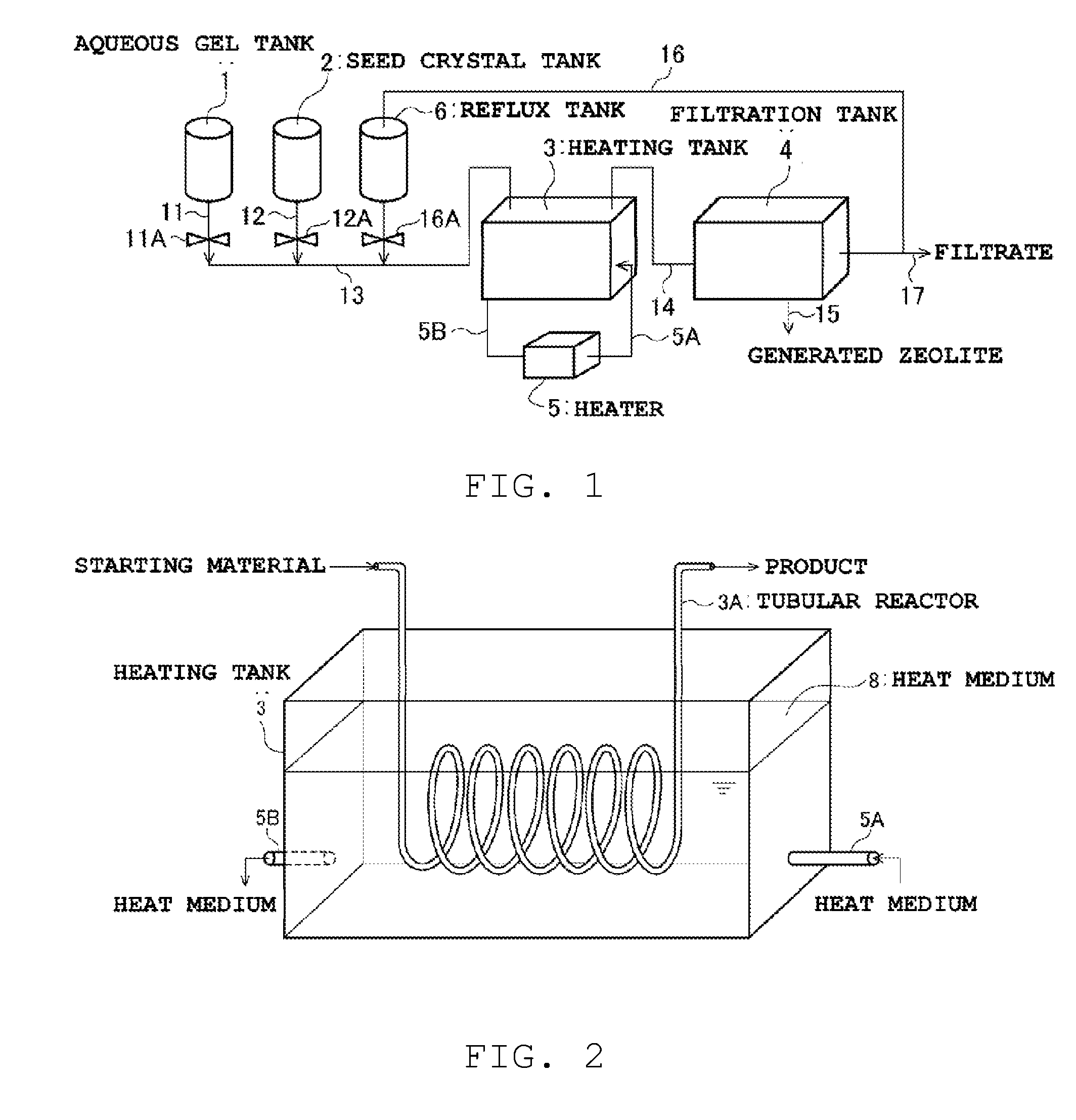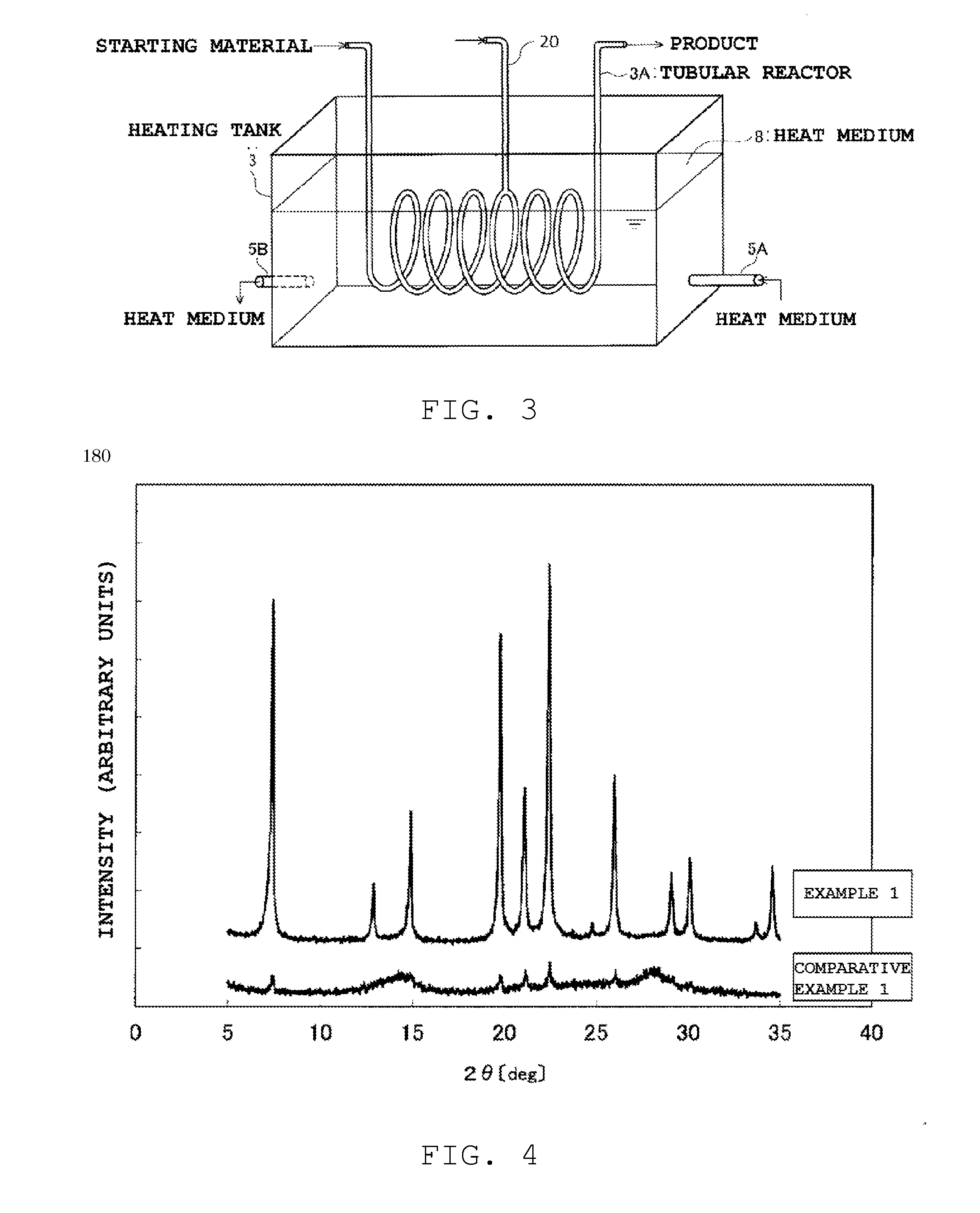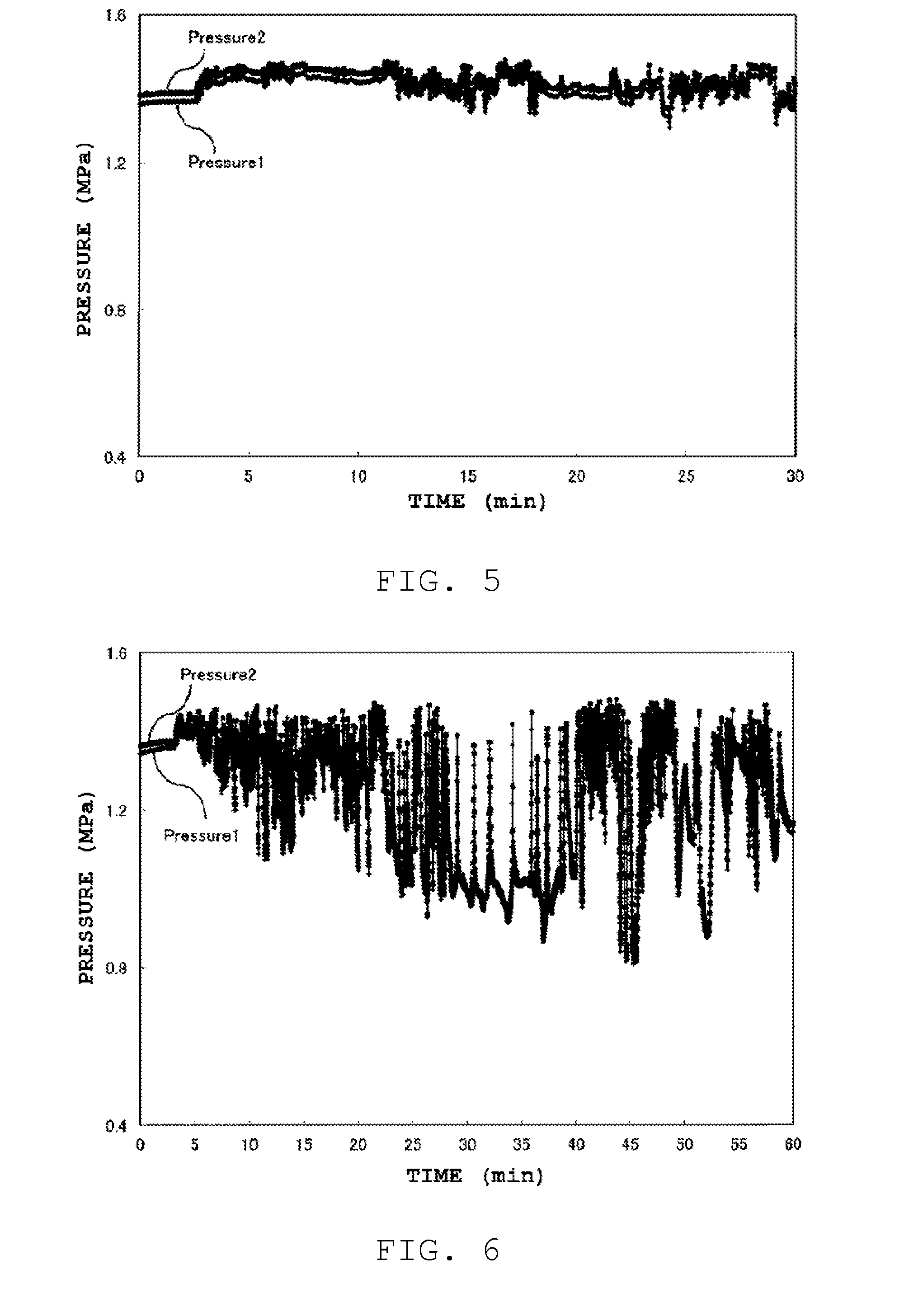Zeolite production method
a production method and technology of zeolite, applied in the direction of crystalline aluminosilicate zeolites, physical/chemical process catalysts, silicon compounds, etc., can solve the problems of resin materials that cannot be used in the reactor, safety, and material such as fluororesin has to be unavoidably used as part of the reactor, etc., to achieve stable and efficient production, short time, and high crystallinity
- Summary
- Abstract
- Description
- Claims
- Application Information
AI Technical Summary
Benefits of technology
Problems solved by technology
Method used
Image
Examples
synthesis example 1
Synthesis of Seed Crystals
[0167]Herein, 85 wt % of phosphoric acid, pure water and pseudoboehmite (Catapal C, by Sasol) were stirred and mixed for 24 hours. Then, a 40 wt % aqueous solution of tetrapropylammonium hydroxide (by Sachem, hereafter referred to as “TPAOH” for short) was added to the obtained starting material mixture, with further stirring for 24 hours, to prepare an aqueous gel having the composition (molar ratio) below.
Al2O3:P2O5:TPAOH:H2O=1:1:1:50
[0168]The aqueous gel was subjected to hydrothermal synthesis under autogenous pressure, at 180° C. for 24 hours, in Teflon-lined autoclave. The obtained product slurry was filtered, washed with water, and dried, to yield an AFI-type AlPO zeolite for seed crystals.
example 1
[0169]An aqueous gel was prepared in accordance with the same method as in Synthesis example 1. To this aqueous gel there were added the seed crystals synthesized in Synthesis example 1, to a proportion of 0.1 parts by weight with respect to 1 part by weight of the Al2O3 in the aqueous gel, to prepare a seed crystal-containing aqueous gel (zeolite precursor gel) of Example 1.
[0170]The seed crystal-containing aqueous gel (zeolite precursor gel) of Example 1 was subjected to hydrothermal synthesis through heating, in an oil bath, of a tubular reactor resulting from winding, in the form of a coil, a stainless steel tube (wall thickness 0.5 mm) having a an outer diameter of 3.15 mm, an inner diameter of 2.15 mm ((volume) / (lateral surface area)=0.037 cm) and a length of 3 m. The amount of oil in the oil bath is about 1000 times the effective volume of the tubular reactor (volume of the interior of the reactor). The reactor was heated in the oil bath at 190° C., and the seed crystal-conta...
example 2
[0194]Herein AlPO zeolites were obtained in the same way as in Comparative example 3, but now the holding time was set to 30 seconds, 1 minute, 2 minutes, 3 minutes or 5 minutes, using the same starting material as in Example 1 (comprising 10 wt % of seed crystals with respect to Al2O3: (zeolite precursor gel)). The (volume) / (lateral surface area) of the tubular reactor that was used was 0.076 cm.
[0195]The XRD analysis of the obtained AlPO zeolites revealed that peaks of AlPO zeolite were almost invisible for the zeolite of reaction time of 30 seconds, and peak intensity was weak for the zeolite of reaction time of 1 minute. Distinct peaks were observed only in the zeolites of reaction times of 2 minutes, 3 minutes and 5 minutes. Respective AlPO zeolites were thus found to have been obtained.
[0196]The degree of crystallinity of the foregoing AlPO zeolites was worked out in the same way as in Example 1. The results were 20% for the zeolite of 30 seconds, 50% for the zeolite of 1 minu...
PUM
| Property | Measurement | Unit |
|---|---|---|
| diameter | aaaaa | aaaaa |
| particle size | aaaaa | aaaaa |
| diameter | aaaaa | aaaaa |
Abstract
Description
Claims
Application Information
 Login to View More
Login to View More - R&D
- Intellectual Property
- Life Sciences
- Materials
- Tech Scout
- Unparalleled Data Quality
- Higher Quality Content
- 60% Fewer Hallucinations
Browse by: Latest US Patents, China's latest patents, Technical Efficacy Thesaurus, Application Domain, Technology Topic, Popular Technical Reports.
© 2025 PatSnap. All rights reserved.Legal|Privacy policy|Modern Slavery Act Transparency Statement|Sitemap|About US| Contact US: help@patsnap.com



